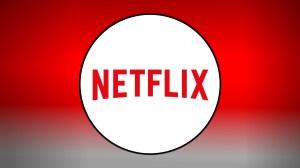Star Trek: Discovery in its second season is exploring the shadowy organization called Section 31. Specializing in espionage and black ops, a spinoff focusing on Section 31 led by Michelle Yeoh is also in the works. But Star Trek: Discovery‘s latest episode, “Saints of Imperfection,” may have redefined Section 31’s position in the Star Trek universe.
Videos by ComicBook.com
Star Trek: Deep Space Nine introduced Section 31 in the episode “Inquisition.” Section 31 was an organization so secretive even most Starfleet officers didn’t know it existed. It claims to work for the benefit of the Federation, doing the dirty work Starfleet is too idealistic to sully its hands with.
Star Trek: Enterprise later revealed that the organization takes its name from Article 14, Section 31 of the Starfleet Charter. Section 31 allows for extreme measures in times of extreme crisis. Enterprise also reveals that the existence of Section 31 predates the formation of the United Federation of Planets. The organization first worked for the protection and advancement of United Earth.
Section 31 drew comparisons to the Romulan Tal Shiar and Cardassian Obsidian Order. It performed many of the same functions as those rival intelligence agencies. Section 31 was especially intimidating for its anonymity and its independence. The organization operating with no oversight from Starfleet as far as anyone could tell.
Star Trek: Discovery changes that perception. The first clue was the existence of black Starfleet insignia badges belonging to Section 31 agents. It is odd that agents of an organization as secretive as Section 31 would identify themselves with Starfleet style badges. Discovery has shown that these badges are a means of proving an agent’s association with Section 31 when necessary. Philippa Georgiou did so when she flashed that badge at Capt. Pike and Cmdr. Burnham in “Saints of Imperfection.”
But the biggest change came towards the end of the episode. Pike’s casual knowledge of Section 31’s existence already seemed at odds with previous appearances of the organization. Admiral Cornwell appearing and scolding Agent Leland for his actions changes everything.
Cornwell’s involvement in the episode shows that Section 31 is a known division of Starfleet. Its agents answer to Starfleet officers despite taking orders from “Control.” The former part of that revelation isn’t huge in and of itself. Even in Deep Space Nine, it was clear that at least a few high-ranking Starfleet officers had knowledge of and dealings with Section 31.
But a Starfleet Admiral dressing down a Section 31 officer is surprising. Section 31 in previous appearances almost flaunted its independence. It seemed like an organization parallel to Starfleet with similar goals and opposed methods.
Is there a way to reconcile this different take on Section 31 with the group’s earlier appearances within continuity? Yes. In fact, there are several.
Star Trek: Discovery takes place a century before Deep Space Nine. It is possible that Section 31’s role changed in the 100 or so years that went by between the two shows. Section 31 is a known entity answering to Starfleet in the 23rd century. It may claim its independence after coming into conflict with Starfleet. That would explain why the group no longer answers to Starfleet in the 24th century. It would also make sense then that Section 31 makes a greater effort to conceal its existence.
Or it could be Starfleet that grows tired of Section 31’s methods. In a fit of conscience, Starfleet could disavow the organization and order its dissolution. Starfleet may even do its best to cover up records of Section 31’s existence, as it did with the existence of the Mirror Universe, out of shame. The twist would be that Section 31 refuses to disband and continues to operate without Starfleet’s input.
The most shocking possibility would be that nothing changes at all. Starfleet always has and always will have oversight of Section 31. The two organizations only get better at hiding their relationship. This maintains Starfleet’s pristine image and perpetuates Section 31 as a myth.
So Star Trek: Discovery may have shifted our understanding of Section 31, but it is still very much the Section 31 that has always been.
What do you think of Section 31’s role in Star Trek: Discovery? Let us know in the comments!
New Star Trek: Discovery episodes become available to stream Thursdays at 8:30 p.m. ET on CBS All Access.









